Gait disturbances — including slowing of walking pace or variations in stride — may be an indicator of cognitive decline, new research suggests.
Four new studies presented here at the Alzheimer's Association International Conference (AAIC) 2012, suggest that observing and evaluating gait in older patients may be a valuable tool when trying to determine the need for further cognitive evaluation.
In the first study, investigators from the Basel Mobility Center in Basel, Switzerland, showed that gait speed slowed and became more variable as cognitive decline progressed.
"Small changes in variability, not visible to the naked eye, can be measured, and those small changes can have a heavy clinical impact," principal investigator Stephanie A. Bridenbaugh, MD, from the Basel Mobility Center, told reporters attending a press briefing.
For example, Dr. Bridenbaugh noted that a change in stride length of just 1.7 cm from one stride to the next can almost double the risk of an older person falling within the next 6 months.
Increased gait variability, she added, can also increase the risk for dementia within the next 5 years, so being able to detect walking irregularities before falls occur or before dementia develops is "relevant and important," she added.
To determine whether gait analysis may aid in the diagnosis of cognitive impairment, the investigators followed 1153 older men (average age, 77 years) who were outpatients at a memory clinic as well as a group of healthy control participants from 2007 to 2011.
Study participants were divided into 3 groups on the basis of their cognitive status. These included healthy cognition (n = 357), mild cognitive impairment (n = 309), or Alzheimer's dementia (AD) (n = 487).
Those with AD were further subdivided into mild (n = 219), moderate (n = 230), or severe (n = 38).
Gait was measured using a 10-meter-long electronic walkway with almost 30,000 integrated pressure sensors.
All participants performed 1 normal walk and 2 different dual tasks — normal walking (self-selected speed) or walking while simultaneously counting backwards out loud or naming animals.
The researchers found that gait slowed as cognitive impairment progressed. In addition, compared with healthy control participants, all cognitive groups' gait was slower during dual task vs normal walking.
Dual Tasking Key
Gait variability, said Dr. Bridenbaugh, remained relatively stable during the normal walking cycle task until AD was moderate or severe. But during dual tasking, gait variability was higher in all cognitive groups. In addition, variability worsened as dementia progressed.
It was noteworthy, she added, that if only gait had been measured during the single walking task, gait changes would not have been detected until the latter stages of cognitive impairment.
"Quantifying gait during dual tasking allows detection of increased abnormal gait variability already at the stages of mild cognitive impairment. So for me, the particularly interesting cases are the ones in which gait variability is abnormally increased during dual tasking but neuropsychological testing shows normal cognition," she said.
"Those are generally the cases where functional impairment preceded measurable cognitive impairment. and I think the situation should trigger a mental flag alerting us to impending problems with both gait and cognition," she said.
The study indicates that dual task paradigms can detect subtle gait differences that would not be picked up by a single walking task alone, she added.
Early Predictor?
Similarly, the Mayo Clinic Study of Aging (MCSA) showed that study participants with lower cadence, velocity, and amplitude of the stride length experienced significantly larger declines in global cognition, memory, and executive function.
Although previous research has examined gait abnormalities that may be associated with cognitive impairment and dementing illnesses, it is unclear which gait components may be associated with future cognitive decline.
"We observed an association between reduced gait velocity, cadence, and stride length and both global and domain-specific cognitive decline in our population. These results support a possible role of gait changes as an early predictor of cognitive impairment," study investigator Rodolfo Savica, MD, Mayo Clinic, Rochester, Minnesota, said in a release.
The MCSA measured stride length, cadence, and speed of more than 1341 study participants through a computerized gait instrument at 2 or more visits 15 months apart.
Outcomes included results on the Short Test of Mental Status (STMS) and results of assessment of 4 neurological and neuropsychological tests covering 4 domains that included memory, attention/executive function, language, and visuospatial ability.
In addition to memory, attention/executive function, language, and visuospatial ability, lower gait measures were significantly associated with a greater decline on the STMS.
Gait Training to Prevent Dementia
In a third study of 1232 individuals aged 49 years and older, investigators from the Rotterdam Study in the Netherlands found that specific aspects of gait are linked with specific cognitive abilities and function.
Specifically, researchers found that walking rhythm, which reflects walking stride time and cadence, was significantly associated with information processing speed; executive function was associated with walking pace and variability; and fine motor speed was associated with walking in tandem or heal to toe walking, in which the heel of the front foot is placed so as to directly touch the heel of the back foot, as though walking on a tightwire.
Memory, the researchers report, was not associated with any aspect of gait.
"These findings," said study investigator Mohammad Ikram, MD, PhD, from Erasmus MC, Rotterdam, "provides a better understanding of this full spectrum of brain dysfunction. It's not just general cognition and general gait; there is this subtle correlation between these various domains."
Against this background, said Dr. Ikram, future studies should explore the link between gait and dementia and AD.
"So can we use gait to predict Alzheimer's dementia before cognitive symptoms of dementia develop; and the reverse of that question is, can gait training be used to delay Alzheimer's dementia?" he said.
A Better Measure?
Finally, a study by researchers at Oregon Health & Science University in Portland suggests that continuous in-home monitoring may be a more accurate measure than single gait tests done, for example, at an annual physical examination.
Lisa Silbert, MD, and colleagues worked with 19 dementia-free volunteers enrolled in the Intelligent Systems for Assessment of Aging Changes (ISAAC) study.
According to Dr. Silbert, walking speed taken at a single time point may overestimate walking abilities in the elderly.
Practical Implications
Commenting on the studies' findings for Medscape Medical News, William Thies, PhD, chief medical and scientific officer of the Alzheimer's Association, said that assessing gait is a practical tool that physicians can use as an early warning sign of dementia.
"It gives [clinicians] another tool to pick out those people that they may want to have a conversation with about memory or that they want to refer for more intensive evaluation of their cognitive function," he said.
"We know how hard it is for the primary care doc to identify those people who are in the very early stages even of dementia. And so we think that this is something that will be useful to them and easy to build into their practice. It doesn't take a lot of time and doesn't cost anybody a lot of money. All of that seems attractive," said Dr. Thies.
References
1. Alzheimer's Association International Conference (AAIC) 2012. Abstract # O1-08-02, P1-073, P2-022, P2-169. All presented July 15, 2012.
.jpg)







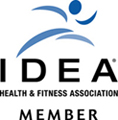
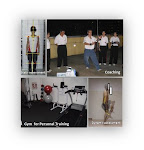
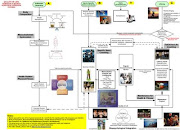




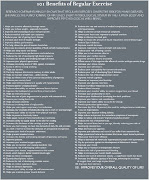






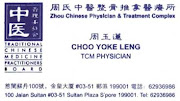



No comments:
Post a Comment